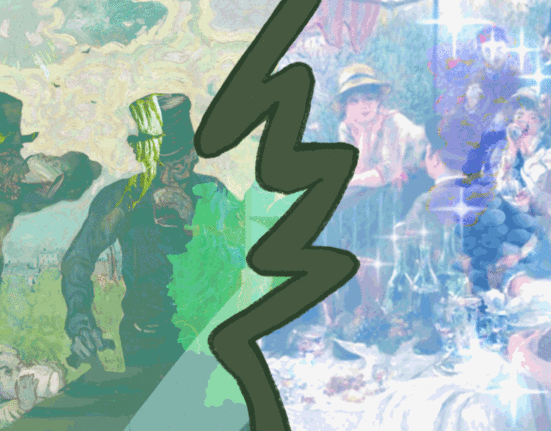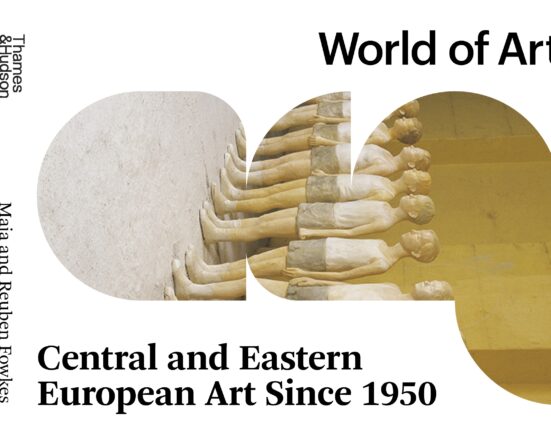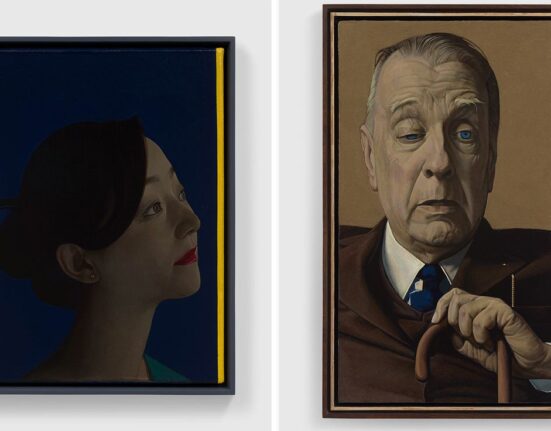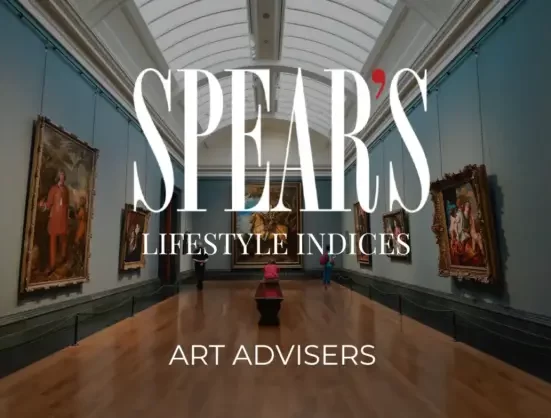As of April 30, the Portland Art Museum is without a curator of European Art. I conducted an exit interview with the previous curator, Dawson Carr, in late March and wrote up a farewell article. I thoroughly enjoyed our conversation, which ranged from the history of the Portland Art Museum’s collections to the future fate of the display of European art in Portland. I have great respect for Carr, and I’ve been thinking about our conversation ever since.
My conversation with Carr highlighted two things about European art that had been bumbling around in my mind half-formed for a while but hadn’t fully formulated: (1) the history of European art in Portland is tied to a narrative of white superiority; and (2) the contemporary display of historical European art in Portland is complicated by that legacy.
The subject of European art is one that is particularly dear to me. I love European art. I spent seven years of my life completing a Ph.D. in European art history. I have spent countless hours teaching other people about European art. I’ve read so many student papers on the European collections in the Portland Art Museum that I have certain wall tags memorized because I’ve read so many paraphrased (and, let’s be honest, a few plagiarized) versions.
Some may say my realization is belated, but I’m an art historian. Art history, as a discipline, was built on the premise that European art, particularly the Italian Renaissance, was the height of artistic achievement and the measuring stick for everything that preceded or followed it. I am far from blameless: I taught and even embraced this version of art history. Unraveling this legacy and reimagining how art history can be taught to equitably consider the artistic production of the whole world, rather than a small part, has occupied my (and my colleagues’) attention for years. While I have spent many hours thinking about this in terms of the classroom, though, I’ve never considered it in relation to a museum.

At the beginning of the interview, Carr spoke about the history of the European collections at the Portland Art Museum. The museum’s founding objects were a set of plaster casts of Classical sculptures and reliefs. They were purchased in 1905 thanks to an initial gift of $10,000 from Henry Corbett, and Winslow B. and Helen Thurston Ayer made the selections while they were on a trip to Europe, according to the museum website. Carr explained that having a collection of plaster casts of Greek and Roman sculptures was “simply what one did at that point in time. We’re fortunate that the plaster casts have been preserved, rather than being shoved in a dumpster because a lot of them don’t exist anymore. You mainly see them now in the Mark Building and in the entertainment areas.”
After the casts, the first original piece of art purchased for the museum was a work by the American impressionist painter Childe Hassam, Afternoon Sky, Harney Desert, in 1909. Hassam was a celebrated artist by 1909; it didn’t hurt that he was also a close friend of one of the founders of the museum, C.E.S. Wood. So the first work was by an American artist rather than a European one.

Works by European painters trickled into the collections in the early years. As Carr explained, “the great Portland families, the Ladds, the Corbetts and so on and so forth left the museum works. And, of course, what these people were collecting in the late 19th and early 20th century was French. It was almost totally French art. I’m not complaining. It’s just that there was no diversity and no real interest in Italy or Spain or even England for that matter. At that point, people looked to France. It was still the art capital of the world.”
Please note that the conception of diversity at this juncture was a different part of Europe.

The major acquisition for the European collections was the addition of the Samuel H. Kress paintings in the 1960s. The works had been on display in Portland since the 1950s; they were formally given to the museum in the early 1960s. Samuel Kress is a major figure in the advancement of European art, particularly Italian Renaissance art, in the United States.
Kress collected art, a lot of art. He would buy paintings as lots and over the course of his purchasing career between 1927 and 1955, amassed more than 3000 artworks. Kress’s intention, however, was never to keep the art for himself. Only two years after he bought his first painting, he started the Samuel H. Kress Foundation. The charter of the organization explains that its goal was to “promote the moral, physical, and mental well-being and progress of the human races” and encourage the “appreciation, interpretation, preservation, study, and teaching of European art.” Among museums in the United States that have big collections of Italian Renaissance works, the vast majority have some connection to Samuel Kress. It’s notable that for Kress, the progress of the “human races” was dependent on European art.

To be fair, the Portland Art Museum bucked art historical tradition by exhibiting American and European works together; many museums separated them. Equally, the museum collections have never been solely European and American. Mary Andrews Ladd donated a sizable number of Japanese prints to the museum in 1932 (though I’d argue collecting Japanese prints at this time has to be understood through the lens of France and Japonisme). The museum even acknowledged artistic predecessors in the region: There was a show of the art of the “Northwest Coast Indians” in 1950 and then a volume published about the subject by the museum in 1966. The objects were treated primarily as ethnographic cultural material.
European art was never the only thing in the museum, but it was the heart of the early holdings and, even today, it retains a certain pedigree within the physical space of the building. It’s upstairs, in the high-ceilinged galleries with plenty of breathing room (even with pre-Covid attendance numbers). There are couches. I’ve never had a student who couldn’t find the European galleries. I’ve had multiple students tell me that they couldn’t find the Native American galleries.
The Portland Art Museum was not founded with the goal of upholding white supremacy. The founders’ purpose was to establish a cultural institution befitting an American city of the time. An embrace of a European culture based on the Classical tradition was the norm in the United States, particularly in the early 20th century. The architecture and presentation of culture at the Chicago World’s Fair (more accurately the World’s Columbian Exposition) in 1893 is a great example of this. The goal wasn’t to uphold eurocentrism, or by extension, white supremacy, it was just baked into the foundation: Europe equals culture and America wants culture.
This brings me to the second point, which relates to the first: the contemporary display of historical European art is complicated by this foundation. In Portland we’re very far away from Europe, and the privileging of European art history over the art history of the rest of the globe has to be understood as a value judgment.
Several of Carr’s comments indicated his intimate awareness of the siege under which European art finds itself, particularly in Portland, and a certain defensiveness about that: “European art at the moment is being denigrated, and very self-consciously so, by a generation that espouses cancel culture. The colonial powers deserve to be punished [they argue], and this is kind of unfortunate when you’re dealing with the arts but it’s there and it’s very very real. To take this and go ‘no, we’re not going to consider this,’ this is the biggest folly imaginable.”
Carr arrived at the museum in 2013 and though he wasn’t directly responsible for organizing the arrival of either show, in 2014, the museum had major exhibitions about Paris and Venice—not Tokyo and Khartoum. In 2015, Carr curated the Gods and Heroes exhibit which was drawn from the collections of the École des Beaux-Arts in Paris. There was a show of the French sculptor Auguste Rodin in 2017 and then the Paris 1900 exhibition in 2019. But looking at the “marquee exhibitions” at PAM in the recent past (and announced future), there has been a waning emphasis on shows of European art.
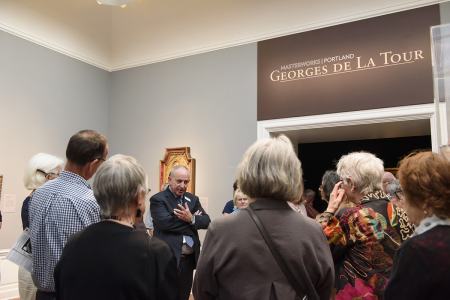
Carr implied the choice was a deliberate attempt to broaden the museum’s audience: “Some would say—oh, it’s just that old, white, privileged audience that supports shows on European art.” His response was to counter the assumption, though primarily about the age of the viewers: “I can tell you, not scientifically, but just by observation that that’s just nonsense. In all of the shows that I’ve done, I’ve seen a lot of young people doing serious looking and talking with each other in these exhibitions, so I don’t think it’s that uni-dimensional. I think some people’s interest in history will prevail.”
The issue, I would argue, is not that European art has to be deemphasized because of its ties to colonialism, nor is it that it only appeals to an “old, white, privileged audience.” Instead, it should be deemphasized because of its entanglement with white supremacy. European art has been the “norm” in the United States, and museums are part of a racist system that is in the process of cracking (we hope). The field has been unfairly rigged to appreciate and celebrate European art; it’s time to even it out.
The Portland Art Museum, and indeed most museums in the United States, have come a long way from their foundational plaster casts of Classical works. The museum’s current mission statement proclaims that “the Museum and Northwest Film Center’s collections, programs, and staff aspire to reveal the beauty and complexities of the world, and create a deeper understanding of our shared humanity.” The idea that European art is going to improve the “human races” has (thankfully) been jettisoned; now the goal is “understanding our shared humanity.”
The mission statement and the exhibition roster of the museum indicate a rejection of the “culture comes from Europe” ethos. But at the same time, by not acknowledging that the museum ever upheld that system, the rejection feels incomplete. And as long as the European and American collections are displayed by themselves in the largest spaces in the building, the rejection feels inadequate.
To celebrate Carr’s retirement, the European and American Art Council purchased a full-length portrait by the seventeenth-century painter Carlo Ceresa, Portrait of Baron Ignazio de Pizzis. It is planned that, after restoration, the portrait will hang across the room from another of Carr’s acquisitions for the museum, Felipe Diriksen’s Portrait of Infanta María Ana de Austria (1630). Carr talked about the two portraits as a pair that will “make a big statement about ruler portraits.”

I don’t doubt that the two will make a statement about rulers, but I don’t think that the statement the museum wants to make, in 2021, is about the power of two white sitters. The representation of power is a shared human value, especially in art. What about, instead of making the statement about ruler portraits in seventeenth-century Europe, the statement was about how art can communicate institutional and personal power across time and cultures? I can’t imagine there aren’t objects in all of the museum’s collections that fit this rubric. If the art works were shown all together, on equal footing, with equal explanation, that would shift the narrative.
There are plenty of themes that the museum’s collections could be grouped into: death, food, spirituality, animals (to name just a few possibilities). Hanging the collection this way would require cooperation and collaboration across departments, but it would more closely adhere to the goal of creating a “deeper understanding of our shared humanity.” It would also more obviously dethrone white culture.
What of the “old, white, privileged audience” that craves European art? I believe, especially in Portland, that when the audience realizes that the reason they understand and appreciate European and American art as “culture” is because of a legacy of white supremacy, they’ll be willing to learn something else. It’s the biases we don’t know we hold that are the most pernicious. This audience doesn’t need to be denigrated; it doesn’t need to be chastised. People are willing to learn and change and that the museum can help facilitate this process.
We don’t have to cancel European art or castigate the founders of the Portland Art Museum. They were not acting maliciously. We can look back and think that their motives were misguided, perhaps even myopic, but not malevolent. We have a responsibility, knowing what we know now, to frankly acknowledge this past and to act to change it. Loving something fully means knowing its flaws and accepting them.
I’m hopeful that the display and conversation about European art won’t always be about white suprematism. I hope that someday, European art, like all art, will be admired and studied for what it is—a record of the creativity, technologies, market forces, and visual culture of a particular place and time. At some point, some of this baggage will disperse. But that moment is not now, and the longer we put it off, the heavier the weight will become.




